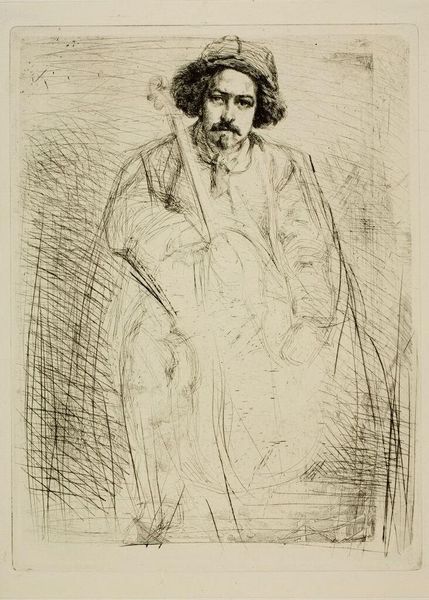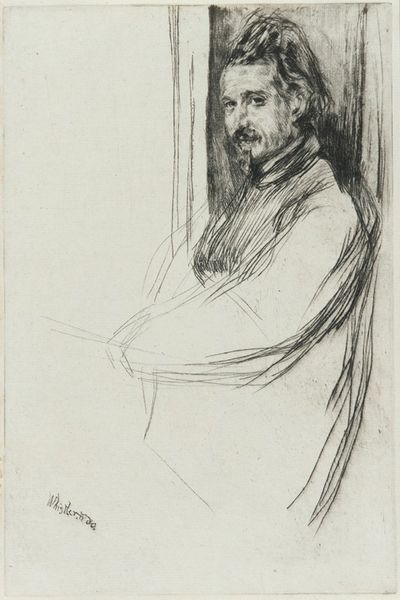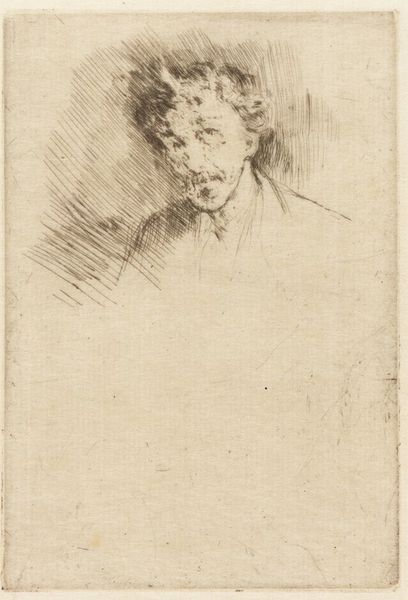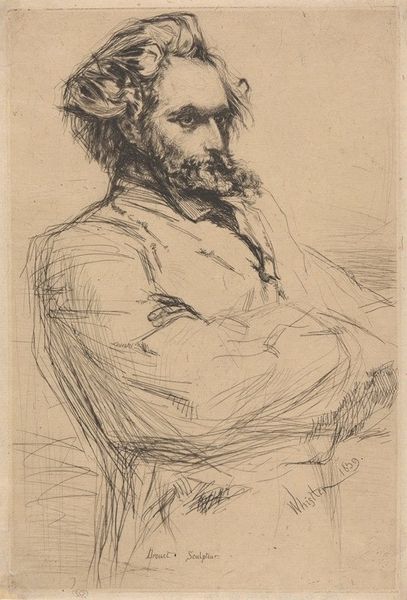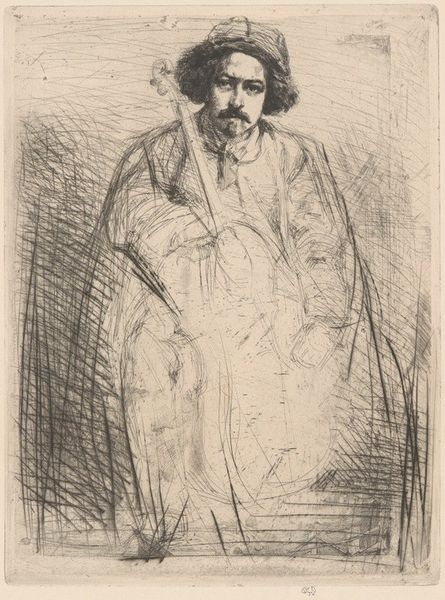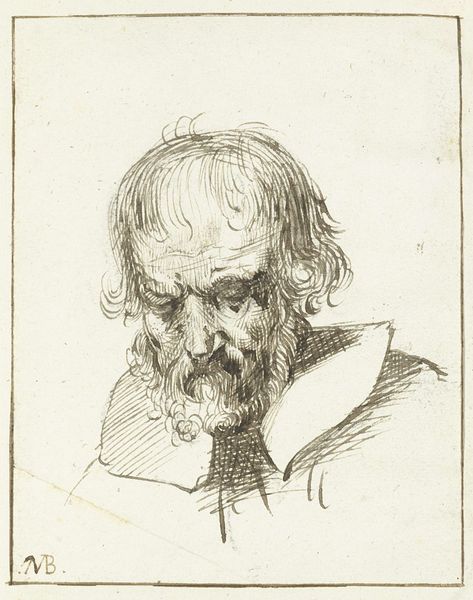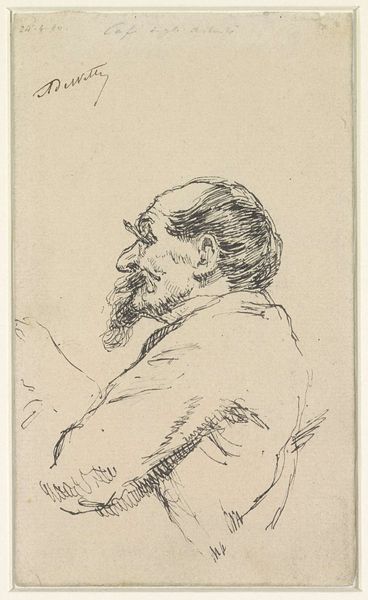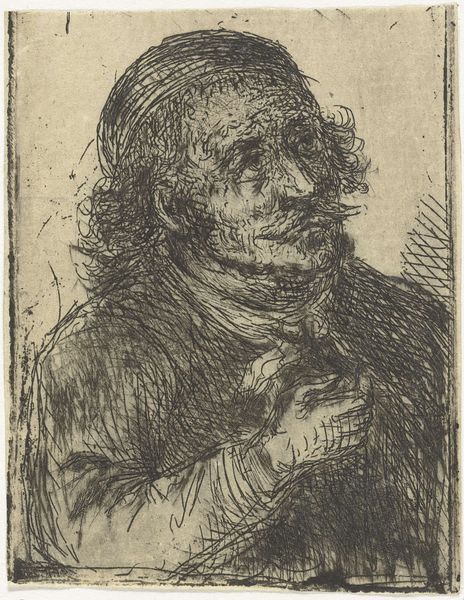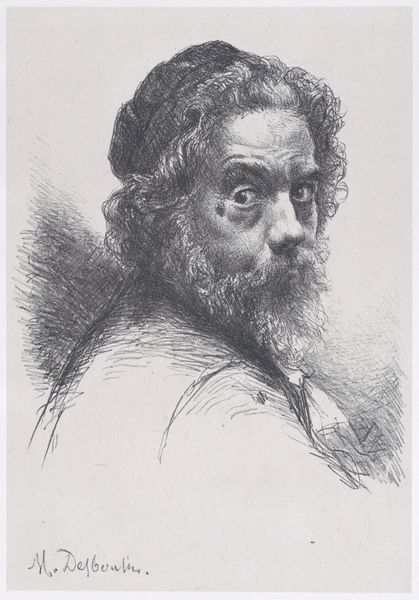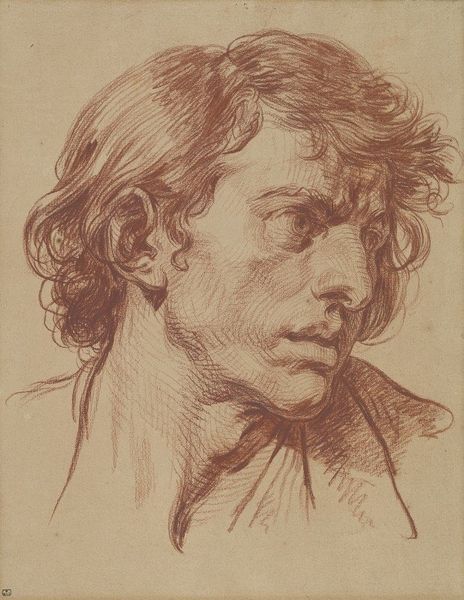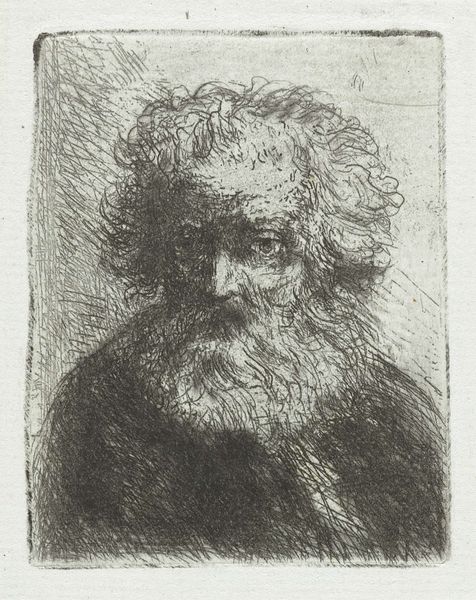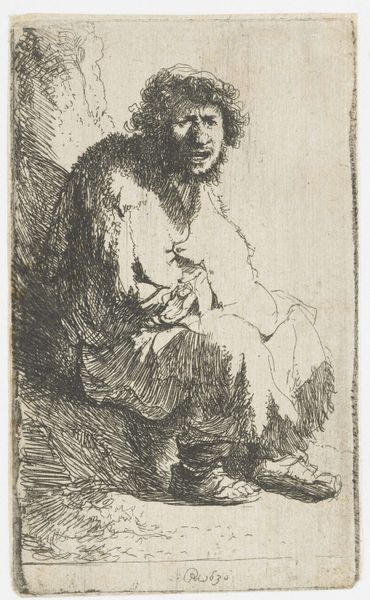
print, etching
#
portrait
#
self-portrait
# print
#
etching
#
realism
Dimensions: height 114 mm, width 77 mm
Copyright: Rijks Museum: Open Domain
Editor: This is Marcellin Desboutin’s self-portrait, an etching from around 1895. There's something about the cross-hatching that gives it this wonderful feeling of introspection. What do you see in this piece? Curator: Well, beyond the masterful technique of the etching itself, notice the pipe. It’s not just a pipe, it’s an attribute. The pipe, particularly in portraits of artists, often symbolized leisure, contemplation, and a connection to Bohemian life. Editor: A Bohemian life? How so? Curator: Think about the cultural memory embedded in tobacco itself. For centuries, tobacco consumption—like coffee or tea—has been tied to spaces of gathering, reflection, and, significantly, social and artistic exchange. A pipe, therefore, becomes shorthand. Desboutin is not simply portraying himself, he is visually locating himself within a specific artistic lineage, echoing artists such as Courbet. What stories do you imagine it conveys? Editor: So, it's like he’s using a symbol to align himself with a particular identity or set of values. I also notice he isn't making direct eye contact. Curator: Precisely. His averted gaze invites speculation. The eyes often are windows to the soul. Here, however, he offers an obstruction and concealment of emotional revelation. The suggestion is one of private thoughts and obscured motivations. It speaks volumes about self-presentation and artistic persona. Editor: That's fascinating, it really opens up the idea of the artwork to many layers of symbolism that I didn't initially notice. It seems like every object and gesture holds some sort of hidden history! Curator: Absolutely. It invites us to unpack not just the image, but the entire cultural landscape within which Desboutin was operating. It helps us understand visual art not as a pure representation but as a dialogue with artistic predecessors.
Comments
No comments
Be the first to comment and join the conversation on the ultimate creative platform.
